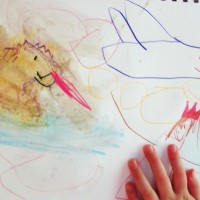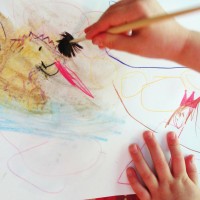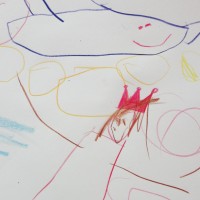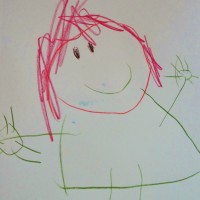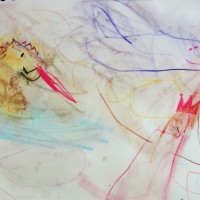 Every November the New York chapter of SCBWI offers a weekend writing workshop: Falling Leaves. Last year the group concentrated on picture books, and this year, middle-grade and young adult novels were the focus.
Every November the New York chapter of SCBWI offers a weekend writing workshop: Falling Leaves. Last year the group concentrated on picture books, and this year, middle-grade and young adult novels were the focus.
This past weekend, I had the pleasure of attending, and arrived one day early to work on a novel revision. After getting lost in Lake George (a booming summer town which seemed to be in hibernation mode), I found one store with its lights on. A woman welcomed me inside and took pity on me, printing out directions to where I needed to go. After four hours in the car, there was another twenty-five mile drive up a winding road in the dark. The woman warned me to drive carefully; watch for sudden turns and drivers traveling in the opposite direction.
The two-lane road twisted and turned, and after forty minutes, I wondered if I had missed my street. It was pitch black. I was starving. And then, I saw a small sign to my right for Silver Bay.
 At the end of this road stood a majestic white building with a wraparound porch lined with rockers. Mine was the only car. Once I discovered an open door, I entered what looked like a living room with a stone fireplace. Few lights were on, and besides the clunk, clunk of my clogs across the wooden floor, the only other sound was a grandfather clock, chiming.
At the end of this road stood a majestic white building with a wraparound porch lined with rockers. Mine was the only car. Once I discovered an open door, I entered what looked like a living room with a stone fireplace. Few lights were on, and besides the clunk, clunk of my clogs across the wooden floor, the only other sound was a grandfather clock, chiming.
“Hello? Anyone here?” I said, wondering if I had been transported into The Shining, where Jack Nicholson might jump out at me from around the corner. “Hello?”
After a minute, a woman appeared holding a flashlight instead of a hatchet. Clearly, my imagination was working over-time.
 The image of The Shining aside, I woke up the next morning and discovered I had indeed been transported to a different place. Not the Overlook Hotel, but a magical place. A world filled with serenity and inspiration, best captured by the photographs I took on my many walks.
The image of The Shining aside, I woke up the next morning and discovered I had indeed been transported to a different place. Not the Overlook Hotel, but a magical place. A world filled with serenity and inspiration, best captured by the photographs I took on my many walks.
While the setting alone was worth the trip; the retreat, organized by Nancy Castaldo, made the weekend unforgettable. The thirty-five writers in attendance were treated to the company of five editors: Kendra Levin, editor at Viking Children’s Books; Julie Tibbott, Senior Editor, Houghton Mifflin Harcourt Children’s Book Group; Noa Wheeler, editor at Henry Holt Books; Wendy Loggia, Executive Editor at Delacorte Press; and Mary Kate Castellani, associate editor at Walker Books. These five women were accessible to us throughout. Charming and reachable, funny and honest, they all gave unique, inspiring presentations.
 Noa talked about beginnings. Using examples from published works, she identified how to grab our readers on page one. The Wizard of Oz as an example, Kendra addressed characters and how motivation drives story. She led us through exercises to help us learn more about our characters. (I must say that this was my favorite part of the weekend. Through Kendra’s exercise, I discovered the truth behind what gets in the way of one of my protagonists.)
Noa talked about beginnings. Using examples from published works, she identified how to grab our readers on page one. The Wizard of Oz as an example, Kendra addressed characters and how motivation drives story. She led us through exercises to help us learn more about our characters. (I must say that this was my favorite part of the weekend. Through Kendra’s exercise, I discovered the truth behind what gets in the way of one of my protagonists.)
 Julie Tibbott had all of us sweating for the week prior to the conference. We were instructed to bring a one-page synopsis. 250 words. Some writers had rewritten their synopsis over fifty times. Others painstakingly edited their synopsis until the length was not 251 or 249 words, but exactly 250. Working on this assignment was the topic of conversation throughout the weekend. Synopses are not easy. They can be more painful than writing the novel itself. And if you can’t succinctly describe your story in 250 words, than you may need to rethink the plot. Or other aspects of the work. Julie worked long after her presentation to help each of us. I will always have the image of Julie, head bent over at a table, reading and writing notes, while the rest of us toasted marshmallows at the bonfire.
Julie Tibbott had all of us sweating for the week prior to the conference. We were instructed to bring a one-page synopsis. 250 words. Some writers had rewritten their synopsis over fifty times. Others painstakingly edited their synopsis until the length was not 251 or 249 words, but exactly 250. Working on this assignment was the topic of conversation throughout the weekend. Synopses are not easy. They can be more painful than writing the novel itself. And if you can’t succinctly describe your story in 250 words, than you may need to rethink the plot. Or other aspects of the work. Julie worked long after her presentation to help each of us. I will always have the image of Julie, head bent over at a table, reading and writing notes, while the rest of us toasted marshmallows at the bonfire.
 Mary Kate Castellani also gave an invaluable presentation, discussing how she presents a project to acquisitions. ‘Handle’ is now a part of our vocabulary. We learned the importance of being aware of the market, and that knowing our selling points is a plus. It is essential that you stay current with today’s market, and to be aware of which novels might be similar to yours.
Mary Kate Castellani also gave an invaluable presentation, discussing how she presents a project to acquisitions. ‘Handle’ is now a part of our vocabulary. We learned the importance of being aware of the market, and that knowing our selling points is a plus. It is essential that you stay current with today’s market, and to be aware of which novels might be similar to yours.
The weekend ended with Wendy Loggia’s presentation on revising step-by-step, where we had the opportunity to hear a selection of her editorial letters, which can range from one to eight pages in length. The editor/author relationship is the heart of the publishing business. Appreciate your editors, who are the true champions of your work, once you receive a contract.
 In addition to the editor presentations, each writer had a thirty minute one-on-one with an editor. On Saturday morning, we broke off into groups of seven for peer critiques. These sessions were highly praised by all.
In addition to the editor presentations, each writer had a thirty minute one-on-one with an editor. On Saturday morning, we broke off into groups of seven for peer critiques. These sessions were highly praised by all.
The food was exemplary, the setting breathtaking, and the company of other writers–all of us different–was inspiring to say the least.
Thank you, Nancy and your loyal assistants, the editors who gave so much to us, and my writing peers who opened their hearts and let me in.
I wanted to share some of the beauty of this location, which caught me off guard. I attended Falling Leaves Retreat with one hope: to learn something new. To find a nugget. One nugget I could use to improve my writing. And with this retreat, I experienced so much more, simply because I had no expectations, except to be diligent about my own writing. Being surprised and swept off your rocking chair is much sweeter.
For what drew me in at this beautiful location, in addition to the writing, here are a few of my photos. I hope you enjoy!































































 Whenever I work in my gardens, go for a walk, or play outside with my granddaughter, I look for butterflies to photograph. If a flicker of yellow or orange flits past me, I run for my camera, hoping. Have the butterflies arrived? Might one linger on top of a flower long enough for me to capture it in a photograph? What does their arrival mean to me?
Whenever I work in my gardens, go for a walk, or play outside with my granddaughter, I look for butterflies to photograph. If a flicker of yellow or orange flits past me, I run for my camera, hoping. Have the butterflies arrived? Might one linger on top of a flower long enough for me to capture it in a photograph? What does their arrival mean to me?


















